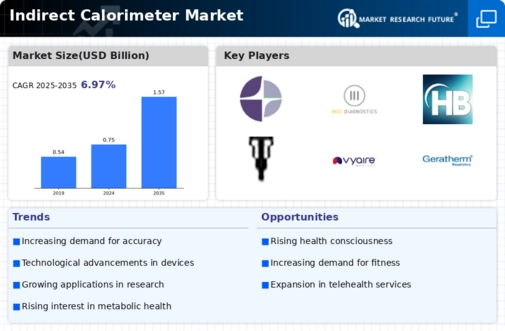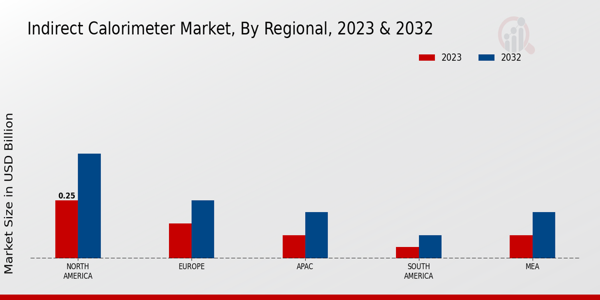The Indirect Calorimeter Market is evolving rapidly, driven by increasing awareness of metabolic health and its implications for chronic disease management. As healthcare continues to prioritize precision medicine, indirect calorimetry has gained traction as a key tool for measuring energy expenditure and metabolic rates in clinical settings.
The competitive landscape of this market is characterized by a diverse range of players, each striving to innovate and offer advanced solutions that cater to the specific needs of healthcare professionals and patients alike. Factors like technological advancements, the growing emphasis on personalized nutrition, and the rising prevalence of obesity-related health issues are influencing the demand for indirect calorimeters, creating a dynamic environment where companies must remain agile and responsive to market trends.Korr Medical Technologies stands out in the Indirect Calorimeter Market with its robust product portfolio and innovative approach to metabolic measurement.
The company has established a solid market presence thanks to its focus on high-quality, user-friendly devices that cater to both clinical and research settings. Korr Medical Technologies has gained recognition for its commitment to accuracy and reliability, providing invaluable data essential for effective treatment plans and dietary interventions. Their indirect calorimeters are designed to deliver rapid and precise measurements, which enhance the overall efficiency of metabolic assessments.
Furthermore, Korr Medical Technologies places a strong emphasis on customer support and education, ensuring that healthcare practitioners are well-equipped to utilize their technology optimally, thereby solidifying their position in a competitive market.MGC Diagnostics also plays a significant role in the Indirect Calorimeter Market, known for its advanced technological solutions and comprehensive approach to health diagnostics. The company leverages decades of experience in the field to develop sophisticated indirect calorimeters that are both accurate and user-friendly. MGC Diagnostics focuses on integrating its products seamlessly into clinical workflows, which improves efficiency and enhances user experience.
Their commitment to research and development ensures that they remain at the forefront of technological innovation, offering unique features such as real-time data monitoring and analysis. Additionally, MGC Diagnostics has a robust network of distribution and support, allowing them to serve a clientele effectively while maintaining high standards in product reliability and customer satisfaction. Their strategic positioning and continuous advancements in technology underscore their pivotal role in the indirect calorimeter sector within the healthcare landscape.


















